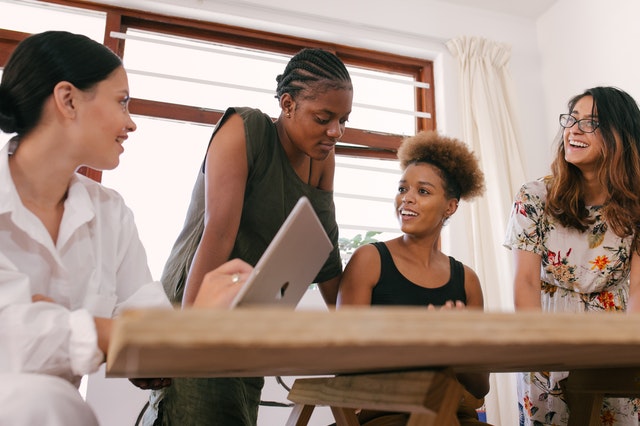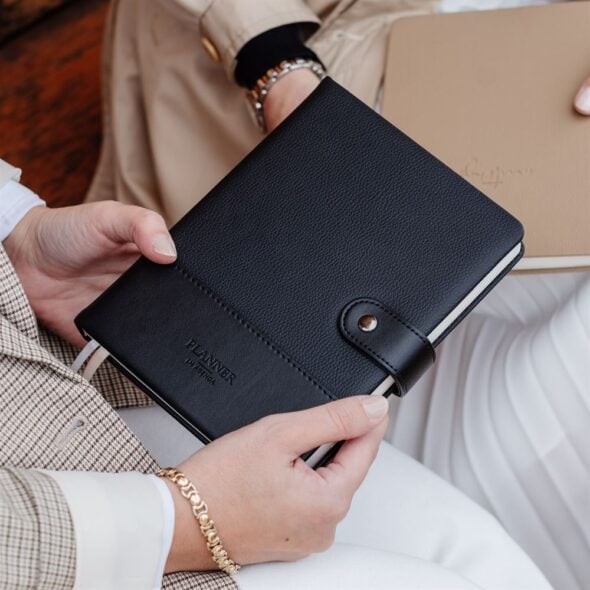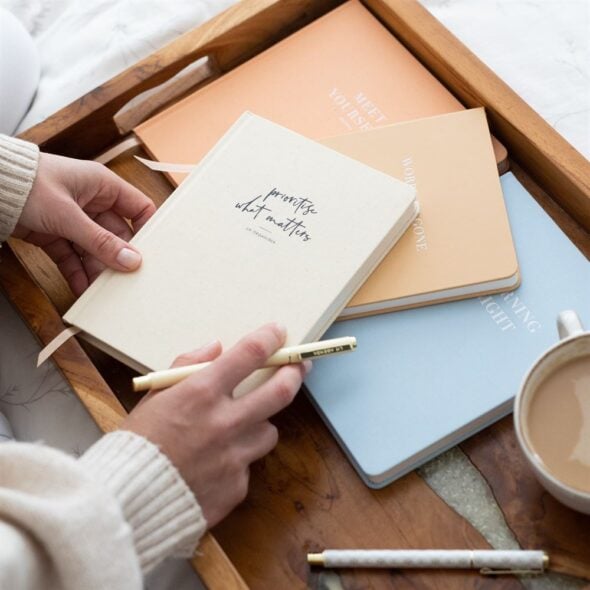At Leaders in Heels, we are passionate about celebrating women’s stories, and when we heard Div Pillay’s story, we knew we had to share it with you. Grab yourself a cuppa and settle in to enjoy this article, written by Div herself.
In light of everything going on in the world today, I #ChooseToChallenge you. I challenge you to think about how you are advocating for culturally and linguistically diverse (CALD) women.
Did you know our award-winning planners and journals are designed in collaboration with industry experts? They feature mindset, productivity and leadership content to inspire and empower you.
I challenge you to support diversity at work and to be an ally and an advocate to women of colour. Indigenous women. Women of migrant heritages. Women who are racially, culturally and linguistically diverse.
Diversity at work: we have seen some real change in the last decade but not nearly enough
Only 15 of all 1,482 CEOs, 44 of all 2,437 senior execs, 188 of all 7,491 directors and 55 of all 1,350 CFOs are culturally diverse women (Diversity Council Australia 2017). Also, only 1.9% of ASX leadership are culturally and linguistically diverse women (Diversity Council Australia, 2017).
Culturally diverse women do not spring from the same starting block. Their lived experience is unique and separate to that of Anglo women, who do not experience the additional barriers and challenges in the career path of culturally diverse women in Australia.
How do I know this? Because I have experienced it firsthand. It is why I have dedicated my life to fighting racial inequity and driving race and cultural inclusion in Australia via my diversity and inclusion consultancy, MindTribes.
I am Div Pillay – a culturally and linguistically diverse woman, migrant, mother, business owner in Australia…
I grew up, was educated and started my career in a segregated Indian society in apartheid South Africa.
My first day in a workplace was an experience I will never forget. I was an affirmative action appointment, in the first post-apartheid year and the first person and woman of colour.
On that first day, I found my name on one of the cubicles in the women’s toilets. Segregated toilets were one of the symbolic ways to divide people in the 1950s and 1960s. So much for diversity at work.
I was not given a desk but a small space at the reception counter and no computer. Enduring this for over a year, I still managed to thrive in my role. I accepted that racism was part of how we were going to be treated. As my parents had taught me to…I advanced through it.
Moving to Australia
In 2002, my husband and I left South Africa for Australia while I was pregnant with my son. We came in a flurry, as violence against Indians was on the rise. Just a few years before, I was hijacked and beaten by three young black men who themselves were trying to survive by attempting to steal my car.
We were lucky. We arrived as skilled, economic migrants. Everything our parents had done, and we had endured, put us in this very privileged position. I was hopeful in that first year about Australia. I got back on my feet and entered the job market when my son was nine months. Then I experienced the high cost of childcare, the lack of flexibility, and the (mostly) all-male leadership teams many other non-migrant women were facing.
Being the diversity at work
My unique experiences in the 10 years that followed showed me how different I was from Australian-born women.
I was the first person of colour in every team. I had to change my appearance by getting rid of my tiny red dot and Indian Thali so as not to appear too traditional.
My name, Divanisha, was too hard to pronounce and it was shortened to Div without asking me. I often got told my accent was difficult to understand. Also, that my international background was too different and I would need to gain more Australian experience and education.
A learning curve
I was told promotions were based on merit, so I maintained high performance. I consistently rated no. 1, then was told by Anglo male and female bosses that my style and approach needed work.
I was too direct, too curious for someone so young and from a different country background. Yet, I was mid to late 30s and had already worked for almost 10 years in Australia.
It took me a few years to work through this and realise what was happening was actually exclusion. Some of it racism, some of it sexism, some of it bullying. And, that by standing still, letting it happen and having no voice, I was now a part of the problem.
I decided to leave my last workplace in 2012 to work across the issues of race and cultural inclusion in Australian workplaces in a more structured and scalable way. Now I have more impact on women like me. And for men like my husband who went through similar experiences in his workplaces.
How you can support cultural and linguistic diversity at work
- Ask honest questions. People in senior roles need to be questioning themselves and their team. What am I actively doing to advance women of colour? Does anyone in my leadership team have negative feelings towards women of colour? How can I work to break down such negative feelings in my workplace?
- Find out where CALD women are within your organisation. Take a look from the top down, and connect in a meaningful way to understand what their lived experience is within your organisation. This needs to be done in a culturally safe way with a skilled and representative facilitator (they need to talk to someone who looks like them).
- Long-term planning for change. Are you moving toward a targeted number of CALD women in leadership? What long term investment are you likely to make to achieve this target?
- Agile, in-the-moment allyship and advocacy. Agile, in the moment allyship means opening up space for CALD women to show their competence, e.g. in meetings. Being an advocate can include sponsoring change to improve a CALD woman’s career trajectory, and to build capability and agency in her.
If you want to learn more, consider signing up for a Culturally Diverse Women (CDW) Masterclass. This is a corporate-sponsored program that seeks to give CALD women the tools and agency to advocate for themselves within their organisation. It also helps them to activate allies, understand the bias and barriers they face, and set goals and milestones.
 About the author
About the author
Div Pillay is the CEO and Co-Founder of award-winning diversity and inclusion consultancy, MindTribes, as well as Culturally Diverse Women (CDW), an organisation that promotes inclusion at the intersection of gender, culture and age. A true innovator for inclusion, Div has 20+ years’ experience in behavioural design, facilitation and impact measurement. Div is an Accredited Executive and Career Life Coach and an expert in Career Management, making her a force amongst the next generation of business leaders. Div was recently named as one of two Australians in a list of 25 Global Influential Leaders by AACSB International – the world’s largest business education alliance.



